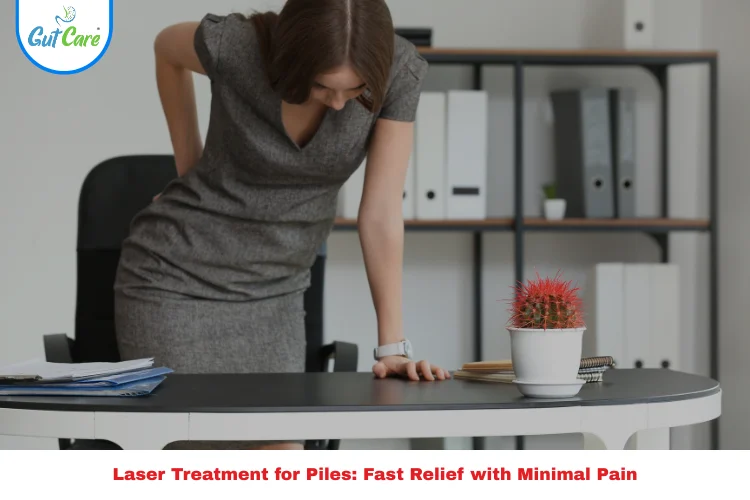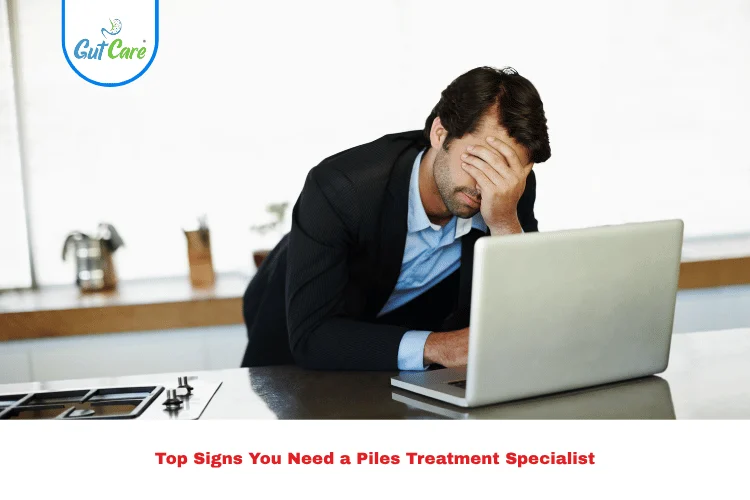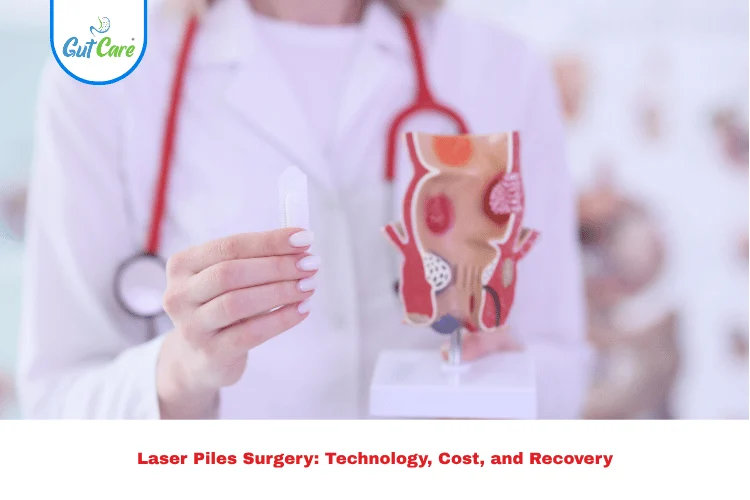Piles can turn simple daily tasks like sitting, walking, or even using the restroom into painful ordeals. The constant discomfort and bleeding often affect your mood and productivity. What if there was a way to quickly and safely eliminate piles without the pain and long recovery associated with traditional surgery? Laser treatment for piles is transforming patient care by offering a modern, minimally invasive solution that provides fast relief and lasting results. Read on to discover why this breakthrough treatment might be the best option for you.
What Are Piles? Understanding the Problem Before the Solution
Piles, or hemorrhoids, are inflamed and swollen veins located in the anal canal or rectum. They develop when increased pressure causes blood vessels in the lower rectum to stretch and swell. Piles are broadly categorized into:
- Internal piles: These occur inside the rectum and are usually painless but may cause bleeding and discomfort during bowel movements.
- External piles: These form under the skin around the anus and often cause itching, swelling, and significant pain.
Common causes include chronic constipation or diarrhea, prolonged sitting or straining during bowel movements, obesity, pregnancy, and a low-fiber diet. Symptoms typically involve bleeding during bowel movements, anal itching, discomfort, swelling, and sometimes mucus discharge.
If untreated, piles can progress from mild irritation to severe pain and complications such as thrombosis or prolapse, making early and effective treatment critical.
How Laser Treatment for Piles Works: A Cutting-Edge Solution
Laser treatment for piles employs a precise, focused beam of light to target the swollen veins responsible for the hemorrhoids. Unlike traditional surgery, which requires cutting and stitching, laser therapy is minimally invasive and preserves healthy surrounding tissue.
The laser energy penetrates the affected veins, causing them to coagulate and collapse. Over time, these treated veins shrink and are reabsorbed by the body, effectively eliminating the piles. This procedure also seals the blood vessels, significantly reducing bleeding risks.
Since the laser is highly controlled, the treatment is painless, quick, and carries a lower risk of complications, making it an excellent option for patients seeking relief without the trauma of conventional surgery.
7 Incredible Benefits of Laser Treatment for Piles You Should Know
1. Minimal Pain and Discomfort
Because laser treatment avoids large incisions and stitches, patients report significantly less pain compared to traditional surgery. The heat from the laser cauterizes the nerves and tissues, providing a soothing effect.
2. Fast Recovery Time
Patients usually experience a rapid return to daily activities, often within 2 to 3 days. This is a major advantage for those with busy lifestyles or work commitments.
3. No Large Incisions or Stitches
The laser’s precision means no open wounds, drastically reducing the chances of infection, scarring, and prolonged discomfort.
4. Reduced Bleeding
The coagulative effect of the laser seals blood vessels during treatment, minimizing bleeding during and after the procedure.
5. Outpatient Procedure
Laser treatment is typically done under local anesthesia in an outpatient setting, meaning you can go home the same day without hospital admission.
6. Lower Risk of Complications
Less tissue trauma means fewer complications such as infections, anal strictures, or delayed wound healing, which are common in conventional surgery.
7. Long-Term Effectiveness
When combined with lifestyle adjustments, laser treatment offers lasting relief with a low recurrence rate, restoring comfort and confidence.
What to Expect During the Laser Treatment Procedure for Piles
Before your laser treatment, your doctor will conduct a thorough evaluation, including a physical exam and possibly diagnostic tests to assess the severity of your piles.
The procedure begins with local anesthesia to numb the anal area, ensuring you are comfortable throughout. A specialized laser probe is then gently inserted to target the hemorrhoidal tissue. The laser energy is applied carefully to collapse and seal the affected veins.
The entire process typically takes about 15 to 30 minutes depending on the number and size of hemorrhoids. The procedure is painless and requires no stitches. Following treatment, you may experience mild swelling or discomfort, which generally resolves within a few days.
Because laser treatment is minimally invasive, most patients can return home the same day and do not require lengthy hospital stays.
Post-Treatment Recovery: Simple Steps to Ensure a Smooth Healing Process
Post-operative care is crucial for a speedy and comfortable recovery. Here are essential tips:
- Diet: Incorporate a high-fiber diet rich in fruits, vegetables, and whole grains to prevent constipation and straining during bowel movements.
- Hydration: Drink plenty of fluids to keep stools soft and promote smooth bowel movements.
- Activity: Avoid heavy lifting and strenuous exercises for at least a week. Gentle walking is encouraged to improve circulation.
- Hygiene: Keep the anal area clean and dry. Use warm sitz baths to relieve any discomfort and promote healing.
- Medication: Take prescribed pain relievers or stool softeners as directed by your physician.
- Follow-up: Attend all scheduled appointments for proper monitoring and to address any concerns early.
Following these guidelines helps minimize complications and accelerates healing, so you can enjoy a pain-free life sooner.
How Much Does Piles Operation Cost? Is It Worth It?
While this may be higher than conventional surgery upfront, the benefits of reduced pain, shorter recovery, and fewer complications often make laser treatment a more cost-effective choice in the long term. Additionally, the ability to resume work quickly saves time and lost income.
Who Should Consider Laser Treatment for Piles?
Laser treatment is suitable for patients with mild to moderate piles, especially those who have not responded well to conservative therapies like dietary changes, creams, or lifestyle adjustments.
It’s ideal for:
- Patients seeking a pain-free, quick recovery option
- Those with bleeding or prolapsed hemorrhoids (Grades 2 and 3)
- Individuals wary of the risks associated with traditional surgery
- People with busy schedules who cannot afford long hospital stays
However, patients with very advanced piles (Grade 4) or other complicating conditions should consult their doctor to determine the best course of action.
Laser Treatment for Piles vs. Traditional Surgery: Which Is Better?
| Factor | Laser Treatment | Traditional Surgery |
| Pain Level | Minimal | Moderate to severe |
| Recovery Time | 2–3 days | 2–4 weeks |
| Bleeding Risk | Low | Moderate to high |
| Scarring | Minimal | More significant |
| Procedure Duration | 15–30 minutes | 1+ hour |
| Hospital Stay | Outpatient | Often requires admission |
| Infection Risk | Low | Higher due to open wounds |
Laser treatment clearly offers numerous advantages for most patients, combining efficacy with comfort and convenience.
Ready to Experience Lasting Relief? Book Your Laser Treatment Today!
Don’t let piles control your life any longer. Choose laser treatment for a fast, safe, and effective solution. Consult with experienced specialists to determine if this minimally invasive procedure is the right fit for you. Take the first step toward comfort and confidence—schedule your appointment today.
Visit Gutcare Clinics For Expert Care!
FAQs About Laser Treatment for Piles
1. Is laser treatment for piles painful?
No, it is designed to minimize pain during and after the procedure. Mild discomfort may occur but is easily manageable.
2. How long does laser treatment take?
The procedure usually lasts between 15 and 30 minutes.
3. Can laser treatment cure all piles?
It is highly effective for Grades 2 and 3 piles; severe cases may require additional interventions.
4. How soon can I return to work?
Most patients can resume work and normal activities within 2 to 3 days.
5. Are piles likely to come back after laser treatment?
Recurrence is rare when combined with a healthy lifestyle and proper post-operative care.




